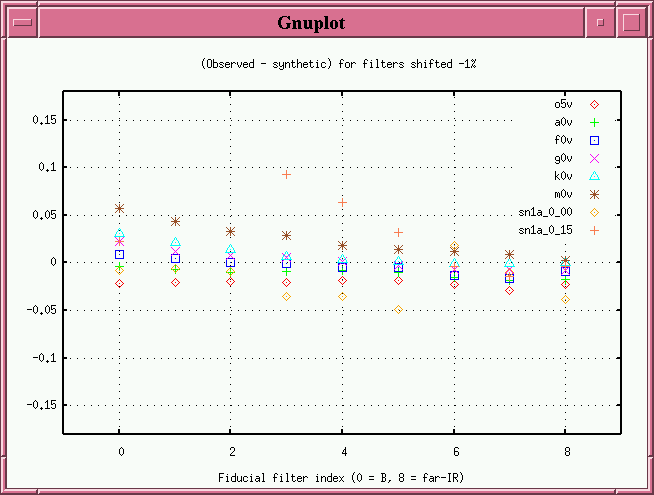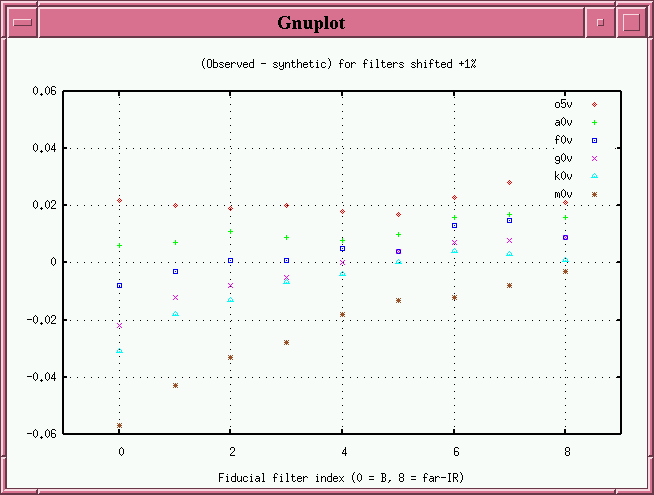
I earlier investigated the effect of a shift of a fixed size in all the filters. Now, I look at a shift by a fractional amount; in this case, plus or minus 1 percent.
First, a shift by positive 1 percent in all wavelengths, so that the filters slide to the red relative to the fiducial values.

Now, a shift by minus 1 percent in all wavelengths.
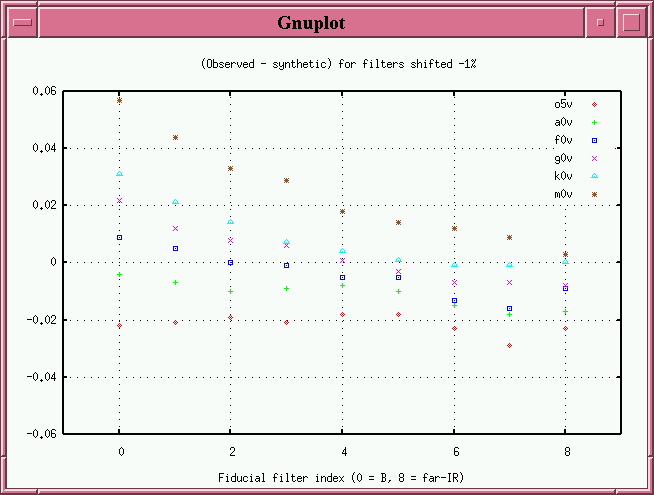
I grabbed spectra of Type Ia supernovae from the BSCW server; specifically, a large data file posted by Alex Kim at this URL:
http://snap.lbl.gov/bscw/bscw.cgi/d24909/snflux_1a.dat
These data are said to be "f-lambda"; that is, flux per unit wavelength, which matches the format of the stellar spectra I've been using. I have created shifted versions of these spectra. Below are a sample of these spectra: SN Ia at age 0, at redshifts z=0, 0.5, 1.0, and 1.5. Note that I have not bothered to renormalize the spectra, since I will re-set the zero-point of each spectrum arbitrarily when creating an artificial catalog of sources.
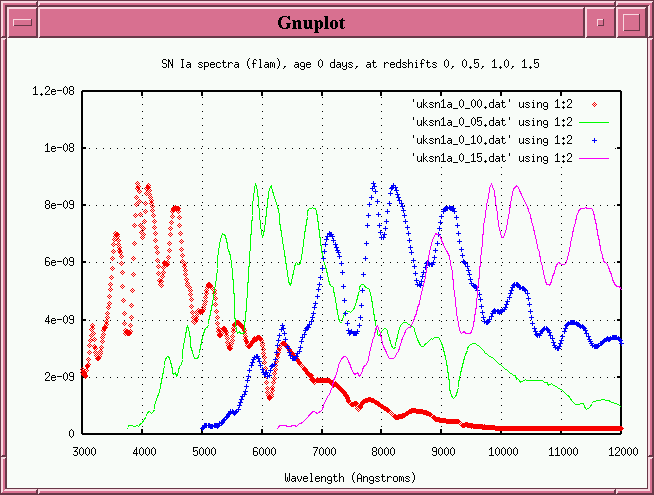
These spectra extend to 2500 Angstroms in the rest frame to the blue. That means that at redshifts greater than about 0.6, there is no data in some of the observed passbands. I will treat that simply as "flux equals zero at these wavelengths."
Note also that these model are not very sophisticated at rest wavelengths longer than 10,000 Angstroms.
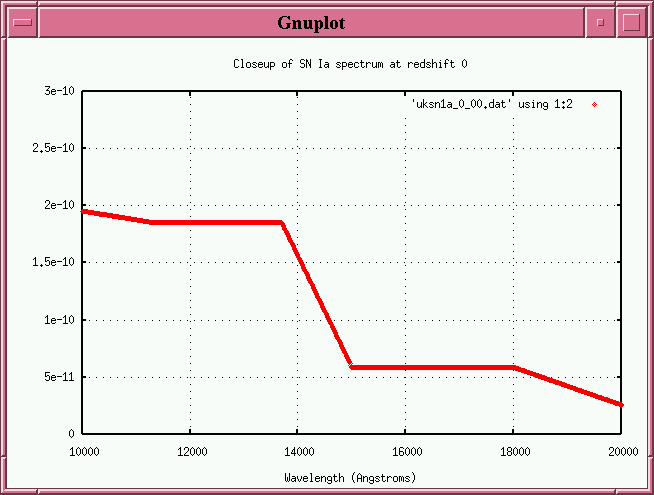
Below is a series of graphs showing the effect of the angle of incidence on photometry of a Type Ia SN, age 0 days, seen at redshift z=0 ("sn1a_0_00") and z=1.5 ("sn1a_0_15").
Recall that there is no data for the SN model at redshift z=1.5 short of 6250 Angstroms, so there's nothing to plot for the first few filters.
Filter 0 (the bluest, like B):
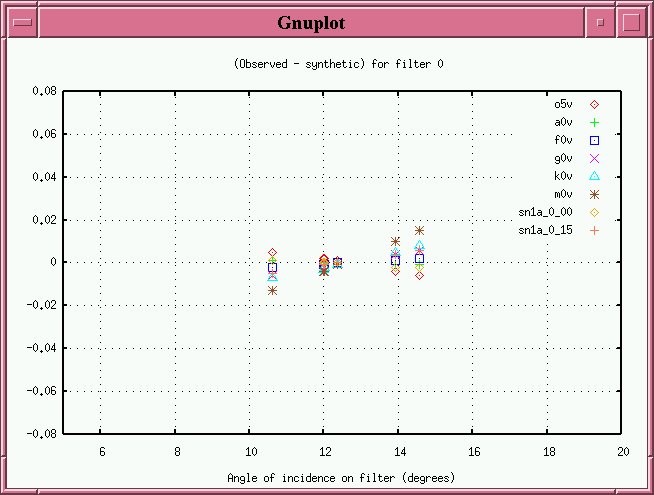
Filter 3 (like I):
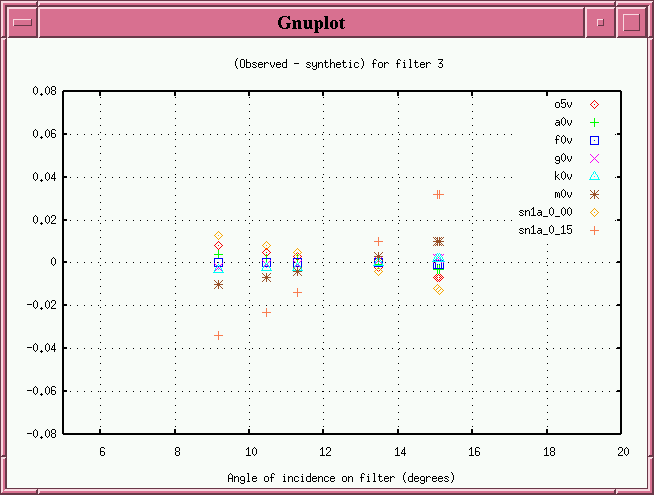
Filter 6 (near IR):
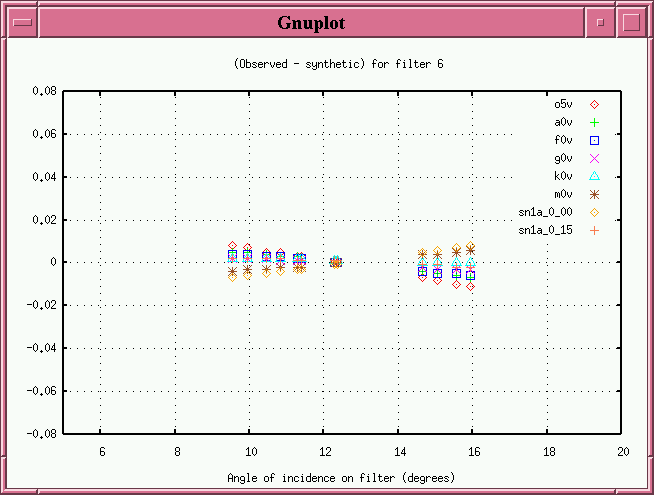
Filter 8 (farther IR):
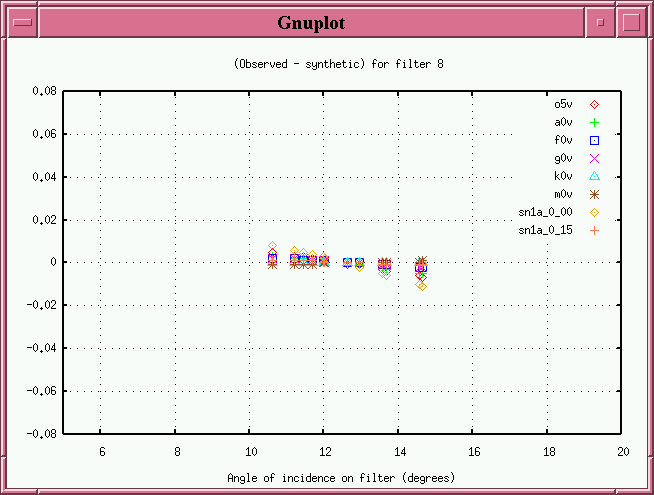
What if the passband shifts by 1 percent to the long (red) or short (blue)? Below, graphs showing the effect of such a shift on the photometry of a Type Ia SN, age 0 days, redshift 0.0 and 1.5.
First, a shift of positive 1 percent (to the red):
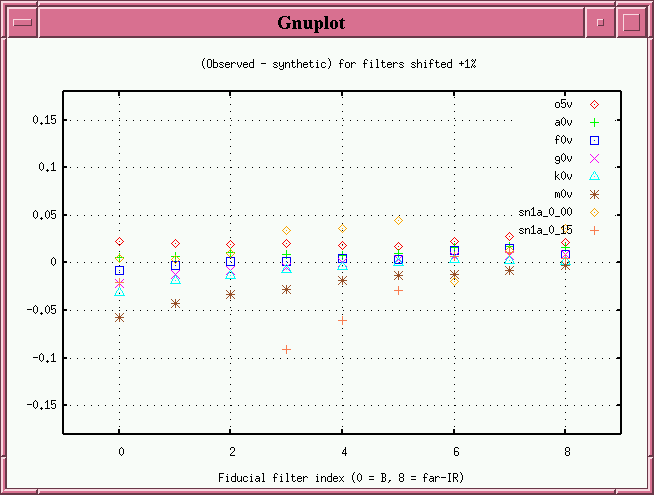
Now, a shift of negative 1 percent (to the blue):
